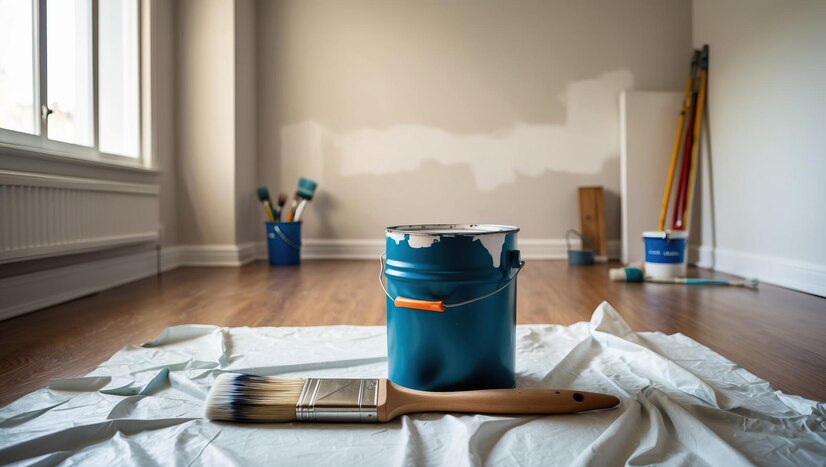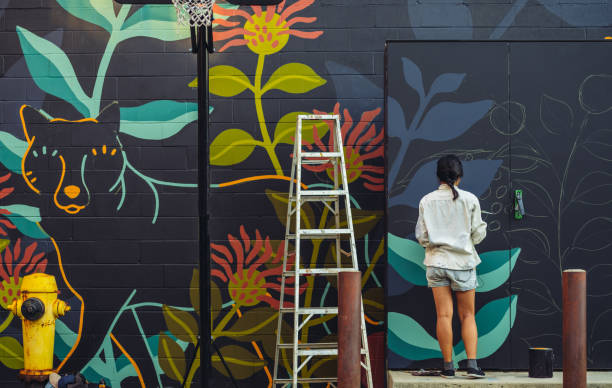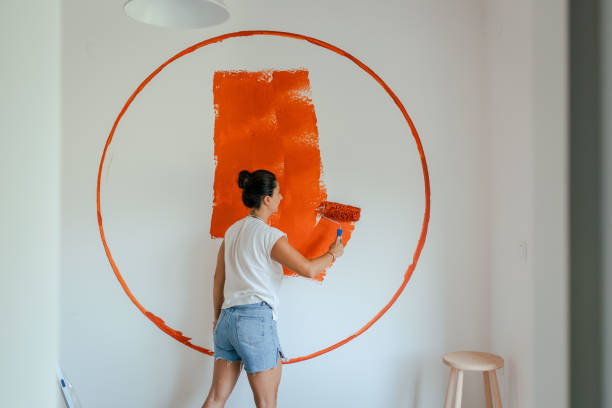How to Make Small Rooms Look Bigger with Strategic Painting Techniques
When it comes to designing a small room, every inch matters. Fortunately, the right paint choices can have a huge impact on how spacious a room feels. To make small rooms look bigger with painting, you need to understand how colors, contrasts, and finishes affect the perception of space. From choosing the right shades to implementing creative techniques, this guide will show you how to transform even the tiniest room into a more open and airy space.
Light Colors to Maximize Space
One of the simplest and most effective ways to make small rooms look bigger with painting is by using light colors. Light tones like whites, soft grays, and pastel shades reflect more natural light, which gives the illusion of a larger, more open space. These colors expand the walls visually, making them recede rather than close in on you.
For instance, painting your small bedroom in a soft off-white or light beige can immediately make the room feel more spacious. Avoid darker colors, as they tend to absorb light and make the space feel more confined. For more inspiration on how light colors can work for your small spaces, check out Femmy by Design.
Use Monochromatic Color Schemes
Monochromatic color schemes are another great way to create visual continuity and flow. By using a single color in varying shades throughout the room, you can make small rooms look bigger with painting by reducing any visual distractions or harsh transitions between walls, ceilings, and furniture. This uniformity allows the eye to move more freely around the space, giving the impression of an expansive area.
For example, painting the walls, trim, and ceiling in varying shades of light gray or beige will keep the room cohesive, preventing any visual breaks. Add texture and contrast with fabrics and accessories rather than stark color changes. Explore more examples of monochromatic schemes on our Instagram page.
Opt for High-Gloss Finishes for Extra Light
Glossy finishes can be another secret weapon in your painting strategy. A high-gloss paint reflects more light than matte or eggshell finishes, making a room appear brighter and more open. Using high-gloss on trim, doors, or even the ceiling can further enhance the spaciousness of a small room.
For instance, a small bathroom painted with a high-gloss white on the ceiling will bounce light around, making it feel taller and more open. But, it’s important to use gloss finishes sparingly, as too much shine can become overwhelming. For more tips on where to apply gloss in your home, visit Femmy by Design.
Create Depth with Accent Walls
If you’re hesitant about using light colors everywhere, you can still make small rooms look bigger with painting by incorporating accent walls. An accent wall adds depth to a room by drawing the eye to a single point, creating the illusion of a more extended space. Choose a subtle, darker shade for one wall while keeping the others light to prevent the room from feeling closed in.
For example, in a small living room, you might paint one wall a soft blue-gray while leaving the rest of the room a light white or cream. This technique adds a focal point and depth, tricking the eye into thinking the room is larger than it is. Get more ideas for accent walls from our Facebook page.
Paint the Ceiling a Lighter Color
A tried-and-true method to make small rooms look bigger with painting is to paint the ceiling a lighter color than the walls. This draws the eye upward, making the room feel taller. A white ceiling paired with light-colored walls can create a sense of vertical space, making the room appear less cramped.
For rooms with low ceilings, this technique is especially effective. Painting the ceiling in a bright white or even a light pastel will instantly lift the space and add a feeling of openness. Discover more ceiling paint ideas at Femmy by Design.
Utilize Stripes for a Stretched Space Effect
Strategic use of stripes can dramatically alter the way a small room feels. Horizontal stripes can make a room feel wider, while vertical stripes can make it feel taller. By painting a feature wall with subtle stripes in soft tones, you can trick the eye into seeing more space than there actually is.
For instance, using light gray and white horizontal stripes in a narrow hallway can visually expand the walls. Meanwhile, vertical stripes in a small bathroom can create the feeling of more height. Stripes are a simple yet powerful way to play with space. For more creative stripe ideas, visit our Instagram page.
FAQs
What are the best paint colors to make small rooms look bigger?
Light colors such as soft whites, light grays, and pastel shades are the best choices. They reflect light and create an open, airy atmosphere.
How does a monochromatic color scheme help enlarge small rooms?
A monochromatic scheme creates visual continuity, reducing harsh transitions and allowing the eye to move freely, making the room appear larger.
Can high-gloss paint make a room look bigger?
Yes, high-gloss finishes reflect light, making the room feel brighter and more spacious. It’s best to use gloss on trim or ceilings for added effect.
What’s the effect of using an accent wall in a small room?
An accent wall adds depth and creates a focal point, making the room appear larger. However, keeping the other walls light maintains the feeling of openness.
Should I paint the ceiling a lighter color than the walls?
Yes, painting the ceiling a lighter color draws the eye upward, creating the illusion of more vertical space and making the room feel taller.
How can stripes be used to make small rooms appear bigger?
Horizontal stripes make rooms feel wider, while vertical stripes make them feel taller. Both can enhance the perception of space in a small room.
Using these strategic painting techniques, you can easily make small rooms look bigger and create a more open, airy home environment. Whether you choose light colors, gloss finishes, or an accent wall, the right approach will transform even the most confined spaces. For expert advice and inspiration, visit Femmy by Design and follow us on Instagram for more home design tips.



